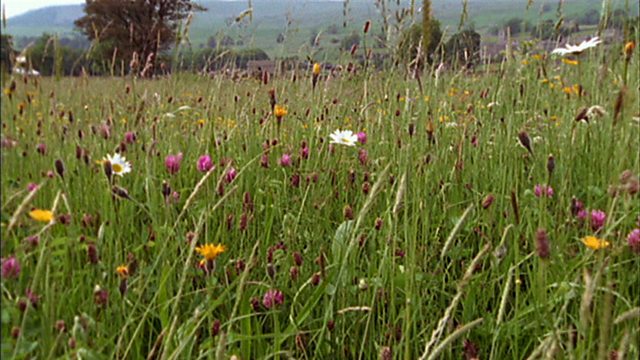
Cutting edge
Britain's wildflower hay meadows resulted from Roman tool innovation.
The Yorkshire Dales might seem an unlikely place to look for Roman remains – but I’m not looking for crumbling ruins or ancient coins – I’m after flowers. Back in May, the livestock were shut out of this field to let the grass to grow good and tall for hay, and it has done, along with the buttercups and the clover. And now it’s ready for cutting – but with what? Well, these days the hay is cut by machine, then dried and stored for the winter – but they didn’t have tractors back then. It needed a bit of Roman innovation. That’s where this tool comes in. Before the mowing machine, the scythe was at the cutting edge of cutting technology, and it’s the Romans that brought them to Britain. Without such an efficient cutting tool we wouldn’t have been able to cut hay, so it’s to the Romans that we owe our hay meadows. And what a wonderful spectacle they make – packed with colour from more than 40 different wild flowers – a botanist’s dream! This one, yellow rattle, is particularly useful because it feeds on the roots of grass, weakening it and allowing the other flowers in. Why yellow rattle? Well, when the seeds are ripe, they shake and rattle in those pods just like a rattlesnake.
Duration:
This clip is from
Featured in...
![]()
�鶹������ҳ��� Nature
Be captivated, informed and inspired by the world's wildlife.
More clips from Taming the Wild
-
![]()
Gastronomic garden snails
Duration: 01:04
-
![]()
Skomer's shearwaters
Duration: 02:32
-
![]()
Rabbit eviction
Duration: 02:48
-
![]()
Norman conservation
Duration: 02:30
More clips from British Isles: A Natural History
-
![]()
Gastronomic garden snails—Taming the Wild
Duration: 01:04
-
![]()
Canal plants—Revolution
Duration: 01:17
-
![]()
Japanese knotweed—Our Future
Duration: 03:20
-
![]()
Falcon quarry—Revolution
Duration: 01:44









